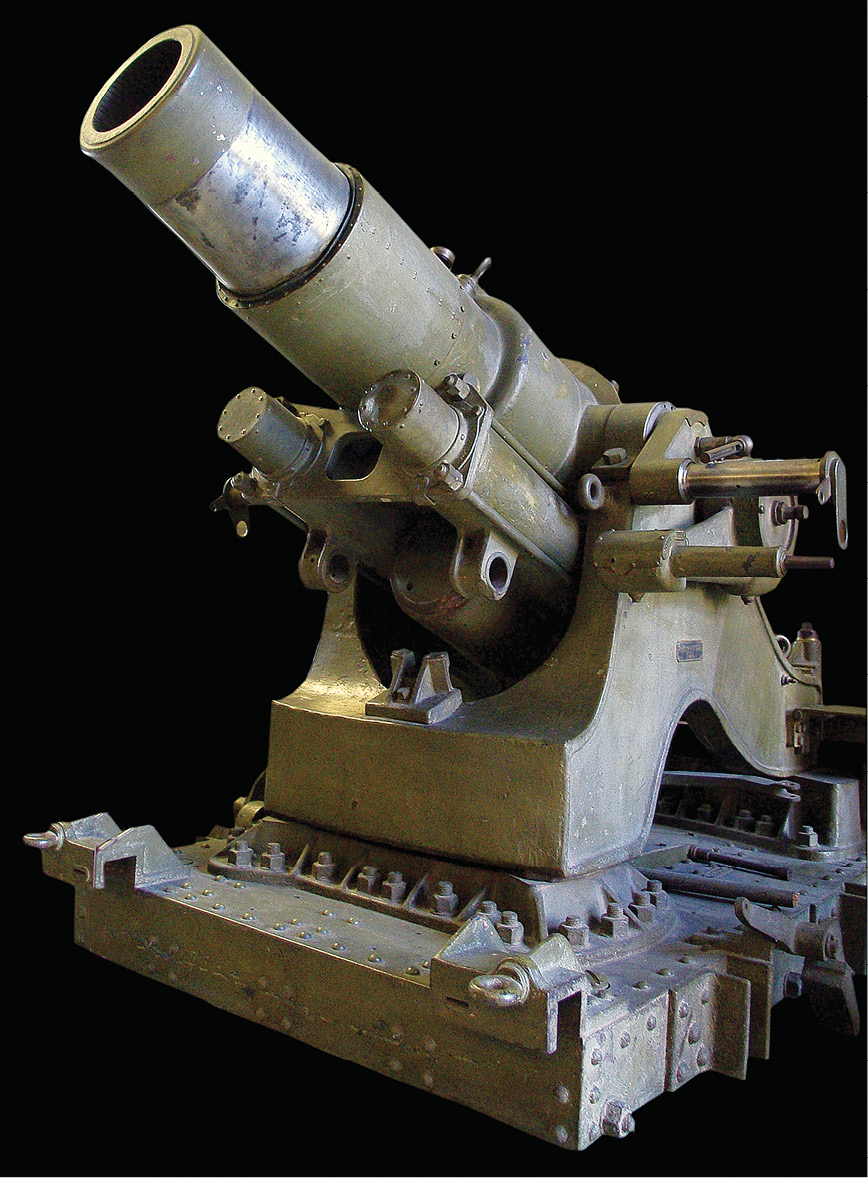54
Austrian howitzer
Country of origin: Austria-Hungary
Date of construction: c. 1916
Location: Heeresgeschicht-liches Museum, Vienna, Austria

THE WAR IN the mountains between Austria and Italy was a technical one: the construction of defenses, the mining of tunnels through rock and glacier, the development of artillery capable of tackling the crippling altitudes and withstanding the extremes of climate. In the Tyrol, the Austrians held the high ground, but had retreated behind the ridge top in order to shield their men from barrage fire (Trommelfeuer), the effect of constant bombardment by Italian artillery upon the Austrian positions. Each explosion brought with it the dangers of rock fragments adding to the injuries from shards of metal. In all cases, artillery was required that could fire a high trajectory round capable of falling in an arc upon the trenches below. For both sides, the use of flat trajectory weapons would be inadequate—with the Italians firing upward toward the Austrians who, in turn, would have to fire down upon the Italians.
The howitzer illustrated is carefully preserved in the Heeresgeschichtliches Museum in Vienna. It is a 38cm Belagerungshaubitze M16—a super-heavy howitzer that was designed for siege operations on the Italo-Austrian front. The first of their kind were given the names “Barbara” and “Gudrun” and were due for delivery to the Austrian front in time for the south Tyrol offensive in May 1916. A further eight heavy weapons were to see action; this one is number six, while its sister, “Gudrun,” is preserved as a war trophy in the National Military Museum of Romania (Romania having entered the war on the side of the Allies in 1916). Each gun took a considerable amount of effort and manpower to move it into position, and a 52-cubic-meter pit had to be dug in order to house the weapon—and withstand the force of its discharge.
The total forces immediately available on the Austrian side of the 350km Tyrolean front were twenty-six infantry battalions, fifty-six garrison detachments, thirty-seven fortress artillery, and three engineer companies: 35,000 men with 146 mobile and 539 siege artillery pieces. Opposing them were the 1st and 4th Italian Armies, comprising twelve infantry divisions and three specialist mountain Alpini groups.
Howitzers and mortars were the only effective weapons—as they were in all trench warfare battles—though the undermining of trenches gave the possibility of an underground explosion. This was particularly so when the peak of the Col di Lana, a mountain affording unrivaled artillery observation of the Italian forces, was detonated. Occupying the peak since January 1916, a battalion of the 2nd Tyrolean Kaiserjäger regiment had been holding the Gipfelstellung, or peak position. Unknown to them, Italian engineers constructed a 52m tunnel beneath the mountain, taking four months to dig. In all, 5,020kg of explosives were in place, ready for detonation in April 1916. This kind of operation required time and planning; artillery preparation with howitzers was much more the norm. In both cases, the extreme environments of the mountain warfare would challenge the fighters.